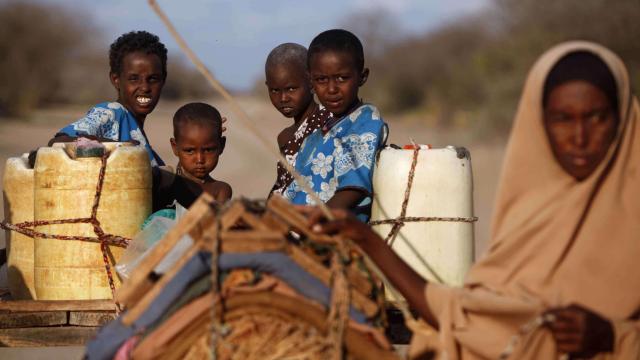Rome – The number of people facing acute food insecurity and requiring urgent life-saving food assistance and livelihood support continues to grow at an alarming rate. This makes it more urgent than ever to tackle the root causes of food crises rather than just responding after they occur. This is a key takeaway from an annual report launched today by the Global Network Against Food Crises (GNAFC) – an international alliance of the United Nations, the European Union, governmental and non-governmental agencies working to tackle food crises together.
The report focuses on those countries and territories where the magnitude and severity of the food crisis exceed the local resources and capacities. In these situations, the mobilization of the international community is necessary.
Key figures
The document reveals that around 193 million people in 53 countries or territories experienced acute food insecurity at crisis or worse levels (IPC/CH Phase 3-5) in 2021. This represents an increase of nearly 40 million people compared with the already record numbers of 2020. Of these, over half a million people (570 000) in Ethiopia, southern Madagascar, South Sudan and Yemen were classified in the most severe phase of acute food insecurity Catastrophe (IPC/CH Phase 5) and required urgent action to avert widespread collapse of livelihoods, starvation and death.
When looking at the same 39 countries or territories featured in all editions of the report, the number of people facing crisis or worse (IPC/CH Phase 3 or above) nearly doubled between 2016 and 2021, with unabated rises each year since 2018.
The root causes of food crises
These worrying trends are the result of multiple drivers feeding into one another, ranging from conflict to environmental and climate crises, from economic to health crises with poverty and inequality as undelaying causes.
Conflict remains the main driver of food insecurity. While the analysis predates Russia’s invasion of Ukraine, the report finds that the war has already exposed the interconnected nature and fragility of global food systems, with serious consequences for global food and nutrition security. Countries already coping with high levels of acute hunger are particularly vulnerable to the risks created by the war in Eastern Europe, notably due to their high dependency on imports of food and agricultural inputs and vulnerability to global food price shocks, it notes.
The key drivers behind rising acute food insecurity in 2021 were:
conflict (main driver pushing 139 million people in 24 countries/territories into acute food insecurity, up from around 99 million in 23 countries/territories in in 2020);
weather extremes (over 23 million people in 8 countries/territories, up from 15.7 million in 15 countries/territories);
economic shocks – (over 30 million people in 21 countries/territories, down from over 40 million people in 17 countries/territories in 2020 mainly due to the fallout from the COVID-19 pandemic).
Commissioner for International Partnerships Jutta Urpilainen said: “Russia’s invasion of Ukraine jeopardizes global food security. The international community must act to avert the largest food crisis in history and the social, economic, and political upheaval that could follow. The EU is committed to address all drivers of food insecurity: conflict, climate change, poverty and inequalities. While it is necessary to provide immediate assistance to save lives and prevent famine, we must continue to help partner countries in transition to sustainable agri-food systems and resilient supply chains by tapping the full potential of the Green Deal and the Global Gateway.”
Commissioner for Crisis Management Janez Lenarčič said: “There should be no place for hunger in the twenty-first century. Yet, we are seeing too many people pushed away from the path to prosperity. A clear message resonated today: if we want to prevent a major global food crisis, we need to act now, and we need to work together. I believe the international community is up to this task. By leveraging collective action and pooling resources, our global solidarity is stronger and far reaching. As demonstrating with its aid funding as well as humanitarian-development-peace synergies, the EU remains committed to address this food and nutrition crisis together with the international community.”
“The tragic link between conflict and food insecurity is once again evident and alarming,” said FAO Director-General QU Dongyu. “While the international community has courageously stepped up to the calls for urgent famine prevention and mitigation action, resource mobilization to efficiently tackle the root causes of food crises due to, among others, the impacts of the COVID-19 pandemic, the climate crisis, global hotspots and the war in Ukraine, still struggles to match the growing needs. The results of this year’s Global Report further demonstrate the need to collectively address acute food insecurity at the global level across humanitarian, development and peace contexts.”
“Acute hunger is soaring to unprecedented levels and the global situation just keeps on getting worse. Conflict, the climate crisis, COVID-19 and surging food and fuel costs have created a perfect storm – and now we’ve got the war in Ukraine piling catastrophe on top of catastrophe. Millions of people in dozens of countries are being driven to the edge of starvation. We urgently need emergency funding to pull them back from the brink and turn this global crisis around before it’s too late,” said WFP Executive Director David Beasley.
